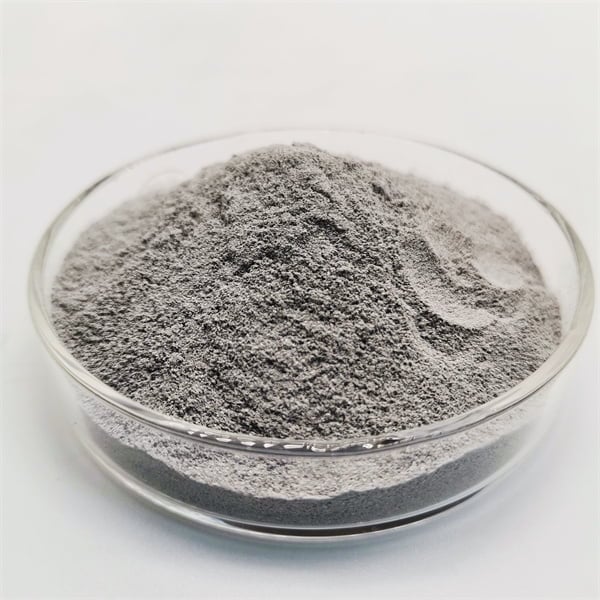最も人気のある3Dプリンター
目次
空中から物体を呼び出す夢を見たことがあるだろうか?まあね、 3Dプリンター は、私たちがSFを現実にすることに最も近づいている。この魅惑的な機械は、デジタルの設計図を取り込み、それを具体的な三次元の作品へと、一層一層変換していく。しかし、このマジックは一体どうやって起こるのだろうか?3Dプリンティング技術の魅惑的な世界をご紹介しよう。
基礎を理解するFDMと樹脂印刷の比較
3Dプリント技術には大きく分けて2種類ある:FDM(溶融積層造形)とレジン・プリンティングだ。FDMはステロイドのホットグルーガンのようなもので、樹脂プリントは光で活性化された液体プラスチックのミニチュア桶のようなものです。
FDMプリンティング:溶融プラスチックで作る
- コア・プロセス: FDM印刷では、フィラメント(細いプラスチックワイヤーを想像してほしい)のスプールが、加熱された押出機のノズルに供給される。このノズルは小さな鍛冶屋のような役割を果たし、フィラメントを溶かして溶融ストリームにする。プリンターはデジタルの設計図に従って、押し出しヘッドの動きを正確に制御する。溶けたプラスチックがにじみ出ると、冷えて固まり、一度に1層ずつ物体を作り上げていく。ケーキを一層ずつ霜で固めていくのを想像してほしい。霜の代わりに、溶けたプラスチックを使っているのだ!
- メリット FDMプリンターは一般的に、樹脂プリンターに比べて手頃な価格で使いやすい。フィラメント素材のバリエーションが豊富で、標準的なPLA(ポリ乳酸)から、ウッドフィルやメタフィルといったエキゾチックなオプションまで、あらゆる素材での印刷が可能です。
- デメリット FDMプリントされたオブジェクトは、目に見えるレイヤーラインを示すことができ、最終製品の全体的な滑らかさに影響を与えます。また、プリントの複雑さによっては、サンディングやサポート除去などの後処理が必要になることもあります。

樹脂印刷:光による高精度
- プロセスを照らす 樹脂印刷は、特定の波長の光を照射すると硬化する感光性材料である液体樹脂の桶を利用する。デジタル・ライト・プロジェクター(DLP)またはマスク光源(SLA)が、対象物のレイヤーごとの画像を樹脂槽に投影する。露光された部分は固化し、露光されていない樹脂は液体のままである。その後、対象物を保持するプラットフォームがわずかに下降し、対象物全体が完成するまでこのプロセスが繰り返される。
- メリット 樹脂プリンターは驚くほど滑らかで精細な印刷ができるので、ミニチュアや宝飾品のような高い精度が要求される用途に最適です。
- デメリット 樹脂プリンターは通常、FDMプリンターに比べて造形量が小さい。樹脂自体は厄介で、その危険な性質のために取り扱いに注意が必要です。さらに、後処理では、溶剤でプリントを洗浄し、強度を高めるために紫外線で硬化させることもあります。
マシンを深く掘り下げる重要部品
プリンティングのコア技術を理解したところで、3Dプリンティング・シンフォニーを編成する主要コンポーネントを探ってみよう:
- プリンターフレーム: この頑丈なフレームが、すべての可動部を構造的に支えます。正確な動きを保証し、振動を最小限に抑えることで、高品質のプリントを実現します。
- エクストルーダー(FDM)またはバット(樹脂): 先に述べたように、FDMプリンターでは押出機がフィラメントを溶かして堆積させ、樹脂印刷では樹脂槽が感光液を保持する。
- ビルド・プラットフォーム このプラットフォームが土台となり、その上にオブジェクトが徐々に作られていく。新しいレイヤーを重ねるごとに上下に移動します(プリンターによって異なります)。
- プリントヘッド(FDM)または光源(樹脂): FDMプリントヘッドには押し出しノズルがあり、溶融フィラメントを正確に誘導する。樹脂プリントでは、光源(DLPまたはSLA)がレイヤー画像を樹脂槽に投影します。
- モーションシステム: このシステムは、X、Y、Z軸に沿ったプリントヘッドまたはプラットフォームの正確な動きを保証し、デジタル設計図を物理的なオブジェクトに変換します。これには通常、ステッピングモーターとベルトが使用されます。
- コントロールシステム: 操作の頭脳である制御システムは、デジタル3Dモデル(通常はSTLまたはGコード形式)を解釈し、さまざまなコンポーネント(モーター、押出機など)に、オブジェクトを作成するための動きや機能を指示する。
基本を超えて高度な機能と考察
3Dプリンティングの世界は、これらの基本原則をはるかに超えて広がっています。ここでは、覚えておくべき追加の機能と考慮事項をいくつか紹介します:
- デュアル・エクストルージョン: プリンターの中にはデュアル押出機能を誇るものもあり、2つの異なる色や素材で同時にオブジェクトを印刷することができます。柔軟なTPUのベースと、保護を強化するための硬いPLAのトップでスマホケースを印刷することを想像してみてください!
- 加熱ベッド(FDM): 加熱されたベッドは、ABS(アクリロニトリル・スチレン・ブタジエン・スチレン)のような一部の材料で一般的な問題である反りを防ぐのに役立ちます。加熱されたベッドは、フィラメントの最初の層をわずかに溶かした状態に保ち、印刷面へのより良い接着を保証します。
- スライスソフト: スライシング・ソフトウェアは、3Dモデルとプリンターの間の翻訳機だと考えてください。デジタルデザインを数百、数千の薄いレイヤーにスライスし、レイヤーごとにオブジェクトを構築する方法をプリンターに正確に指示します。人気のあるスライスソフトウェアには、Cura、Simplify3D、PrusaSlicerなどがあります。
- 印刷品質と解像度: 従来のプリンターと同じだ、 3Dプリンター は、さまざまなレベルの印刷品質と解像度を提供しています。解像度の高いプリントは、細部や滑らかな表面を誇りますが、プリント時間も長くなります。レイヤーの高さ、ノズルの直径(FDM)、光源の品質(樹脂)などの要素はすべて、印刷されたオブジェクトの最終的な解像度に寄与します。
- 安全性への配慮: FDM印刷も樹脂印刷も、発熱体や潜在的に危険な材料を扱うことになります。FDMプリンターを使用する際は、一部のフィラメント(特にABS)から発生するガスに注意してください。印刷スペースでは常に適切な換気を心がけてください。樹脂印刷では、液状の樹脂が刺激物となる可能性があるため、手袋や目の保護具を使用して適切に取り扱う必要があり、特に注意が必要です。さらに、使用済み樹脂の廃棄は、推奨されるガイドラインに従う必要があります。
未来を垣間見る:エキサイティングなフロンティア 3Dプリンター
3Dプリント技術は常に進化し、可能性の限界を押し広げています。ここでは、地平線上にあるいくつかのエキサイティングな進歩を覗いてみましょう:
- マルチマテリアル印刷: 同じ印刷物の中に、硬い素材、柔軟な素材、さらには導電性素材を組み合わせて物体を印刷することを想像してみてほしい!これは、複雑な機能的プロトタイプや、カスタマイズされた医療用インプラントを作成するための扉を開く。
- バイオプリンティング: この画期的な技術は、生体適合材料を利用して、生体組織や臓器全体を印刷するものである。まだ初期段階にあるとはいえ、バイオプリンティングは組織再生や臓器移植における医療の進歩に計り知れない可能性を秘めている。
- メタルプリント: 3Dプリンター は現在、金属粉末を扱うことができるようになり、耐久性が高く複雑な金属部品の作成を可能にしている。この技術は、航空宇宙、自動車、製造業にとって重要な意味を持つ。

よくあるご質問
ここでは、3Dプリンティングに関する一般的なお問い合わせについて、よくある質問をご紹介します:
| 質問 | 答え |
|---|---|
| どのような 3Dプリンター 初心者の私は何を買えばいいのでしょうか? | FDMプリンターは一般的に、より手頃な価格で初心者にも使いやすい。FDMプリンターは、樹脂プリンターに比べ、材料の種類が豊富で、操作の煩わしさもありません。 |
| 3Dプリンターは高価ですか? | 3Dプリンティングのコストは、プリンターの種類、使用する材料、対象物の複雑さなど、いくつかの要因に左右される。しかし、この技術はますます手頃な価格になってきており、趣味や起業家にとってより身近なものになってきている。 |
| 3Dプリンターで何を印刷できますか? | 可能性はほぼ無限です!スマホケースやおもちゃ、プロトタイプのような機能的なものから、彫刻やジュエリーのような芸術的な作品、さらにはカスタマイズ可能なツールや交換部品までプリントできます。 |
| プリント用の3Dモデルはどこで手に入りますか? | 無料および有料の3Dモデルを提供するオンラインリポジトリは数多くあります。人気のあるオプションには、Thingiverse、Cults3D、MyMiniFactoryなどがあります。また、BlenderやFusion 360のような3Dモデリングソフトウェアを使って、自分でモデルをデザインすることもできます。 |
| 3Dオブジェクトのプリントにはどのくらい時間がかかりますか? | 印刷時間は、オブジェクトのサイズ、複雑さ、解像度によって大きく異なります。簡単なものであれば数時間で済むかもしれませんが、複雑なデザインであれば数日から数週間かかることもあります。 |
シェアする
フェイスブック
ツイッター
LinkedIn
WhatsApp
電子メール
MET3DP Technology Co., LTDは、中国青島に本社を置く積層造形ソリューションのリーディングプロバイダーです。弊社は3Dプリンティング装置と工業用途の高性能金属粉末を専門としています。
関連記事
Met3DPについて
最新情報
製品

3Dプリンティングと積層造形用金属粉末

















